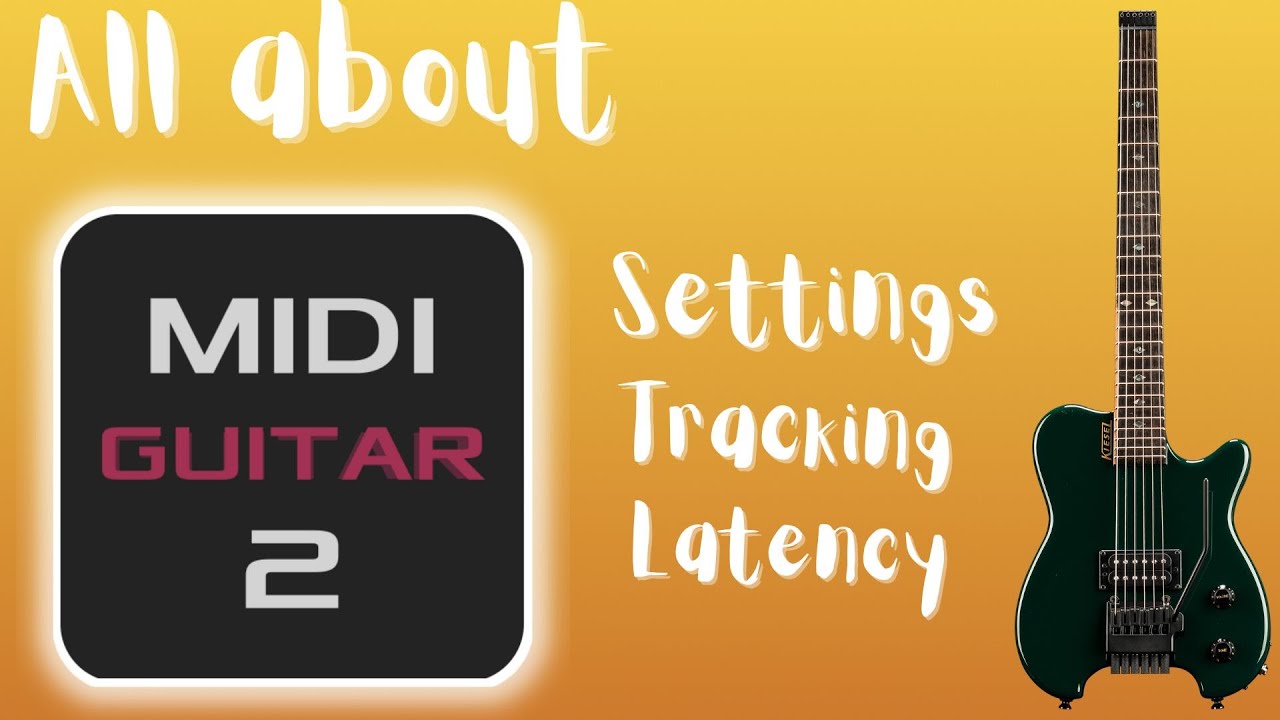This old Ibanez cheapy is doing pretty well but sometimes mid phrase the midi will be a semitone off–destroying the lick of course. I’d sure like to do whatever I can to optimize accuracy but want to avoid wasted efforts. I know I need more time to get used to playing with midi on guitar but am wondering if there are any things people have found that might improve this. Do pickups make much difference? Anything else I might try? I’ve watched YouTubes of people ripping out some pretty detailed and fast stuff and nailing it so I know it’s possible. I just don’t yet know what kinds of things would affect it.
Hi Scott. Switching pickups is probably not going to help you that much in terms of tracking. I can only feel a very small difference between my worst and my best pickups. It is definetly more a question of practice and precision. I made this video, a while ago, the subject.
Thanks a lot Thorleif! Very informative and reassuring. I’ll keep trying it with this short scale Ibanez. I bought it a long time ago as a travel practice guitar. It seems that the scale shouldn’t make much difference either as the note is the note. I see I’ll need a lot of practice on technique. For a while I’ll just be focusing on SWAM sax and trying to make Parker licks sound right. Still awaiting my BBC2.
guitar intonation is a likelier cause of a semi-tone note error than the pickups.
does it happen most often in particular locations on the fretboard?
also it may be worth trying a brighter set of strings.
Thanks kimyo I see what you mean. If the intonation is off 1/4 tone the midi has to choose which way to go so will be a semitone off sometimes. I’ll get the strobe tuner out and get the intonation as close as I can. I can’t remember when the strings were changed–it’s been a neglected instrument so I’ll do that too.
Pressing a string more or less hard or slightly releasing the pressure of the finger may be enough to trigger an unwanted semitone or quarter tone depending on the midi instrument type.
It is even more obvious if you activate the “bends articulation” function, even without bending strings .
HI all. Interesting reading here.
Does anyone have any info regarding the response of MG2 when using under-saddle piezo pick ups vs magnetic pickups in terms of spurious note generation and latency…
I chiefly play nylon string classical with a passive piezo hence mag pickup is not a goer. However I do have steel string guitars with undersaddle pickups.
As we know the positioning and inherent response of under-saddle piezo’s is to give a fast risetime waveshape with lots harmonics, because of the way the initial string pluck transiently hits the piezo. As compared to the more gentle response of mag pick ups which “see” the string vibration mid scale with lower harmonics.
How has the MG2 input signal processing been set up, I wonder? Is it optimised for mag pickup or piezo? I would really like to see a representation of the filtering / thresholding to help explain this - like a block diagram with functional elements defined in terms of time / frequency / level . Any offers Jam Origin?
With my piezo / nylon guitar without pre-amp between the piezo and input to the Behringer a/d I am finding that tuning strings just slightly flat (a few cents) and using damping on the strings to limit the cross - string activity and harmonic content gives the best results so far; but still generates a lot of spurious notes even when played carefully and cleanly - on the A and E2 strings.
So I struggle to see whats going on here and frankly MG2 is not delivering as expected.
Anyone using Nylon string set up with clean response i.e. largely spurious free from MG2?
Thanks for reading!
Hi Soundmodal. I have used MG2 with a Takamine, EN10 ,under saddle pickup, using nylon strings on the bottom E,A and D and steel strings on the top three. I found it to be very good at tracking and spurious notes which I do get with my solid electric guitars seemed to vanish. I had put this improvement down to the greater damping with nylon strings, with perhaps less harmonics getting through. The Takamine is basically a steel strung guitar with quite a low action. Classical nylon guitars normally have higher action and could possibly be affected more by finger pressure stretching the strings slightly, causing innacurate intonation.
I will add that a shorter-scale instrument is more likely to have tracking issues due to less precise intonation and looser strings, which are more likely to bend under regular finger pressure. Longer scale=more leeway between frets for intonation and tighter strings that bend less easily.
I would have to guess that MG depends on a strong detection of the fundamental frequency of each note, so brighter strings may actually hinder precise note detection. Heavy flat wounds may be the ideal strings for MDI note accuracy. I may be wrong, though.
on a bass guitar, i just replaced heavier flat chromes with lighter roundwounds.
the before and after sessions were pretty brief, but i think the lighter roundwounds are slightly better with midi bass. some patches which were problematic became somewhat easier to play.
of course, this may not apply to guitar.
recently, on both bass and guitar i’ve been trying to use strings which impart less ‘character’, thinking that this may provide midi guitar (and another guitar processing solution) with more readily accessible ‘data’.
playing technique is always going to be the top issue, but trying out a different style of strings to see if the tracking is improved is a pretty quick and easy experiment. what sounds best through your amp may not be the best for midi note detection.
guitar magnetic pickup height could also enter into the equation.
Good to know. Thanks.
I’ve been using MG entirely on classical guitars, 6 and 8-string. Most unintended notes are overtones. Adjusting the noise gate can help, though that can also affect sustain. I use a 4-transducer pick-up system [via preamp] which picks up body noise that can produce spurious notes. I always layer with the natural sound, which can help cover up synth note issues. I also favor signal processing over midi, such as [in iOS I’m talking] Fluss, Magma or Alteza. One must also consider the noise generated by the plucking of the string (as it has been pointed out, wound strings are prone to a raspy pluck). I play with fingernails and shape them carefully to produce the roundest tone I can.
I’m very curious as to whether you managed to make it work better. I definitely have the same problem with the E and A strings, they are often retriggered multiple times.
The best results I achieved so far between 2 electric guitars 1 electro-acoustic and 1 classical is playing with the classical guitar with an sm57 pointed towards the 12th fret 45angle pointing towards the neck.
It’s by no means perfect, but probably good enough for me to post process it, mainly joining notes (E & A) and adding the ones it didn’t pick up (higher notes do not always trigger).
I’m very curious to understand what is the expected accuracy to see if I should stop trying to improve the setup with my current guitars. I’ve tried all combinations of pickup positions / tone knobs.
Also I’m wondering if anyone has played with some pre-processing like adding some saturation, compression and such.
geoffsct I have a short scale ibanez Mikro Gutar also and the tracking wasn’t bad when I tried it. I find the short scale a bit weird and it is only a cheap guitar but I have it setup pretty good and sometime is is the only guitar by body allows me to hold. i usually use 8-42 these days but I have 10-46’s on the MIkro,
In reply to chrisc_0 I must try the Antares ATG-1 autotune guitar with Midi Gutar 2 sometime, that corrects for intonation as well as pitch apparently. Need a hex pickup though, and you can’t fit A GK3 etc onto the Ibanez Micro easily. Nor a Yamaha RGX_A2 super light guitar.

